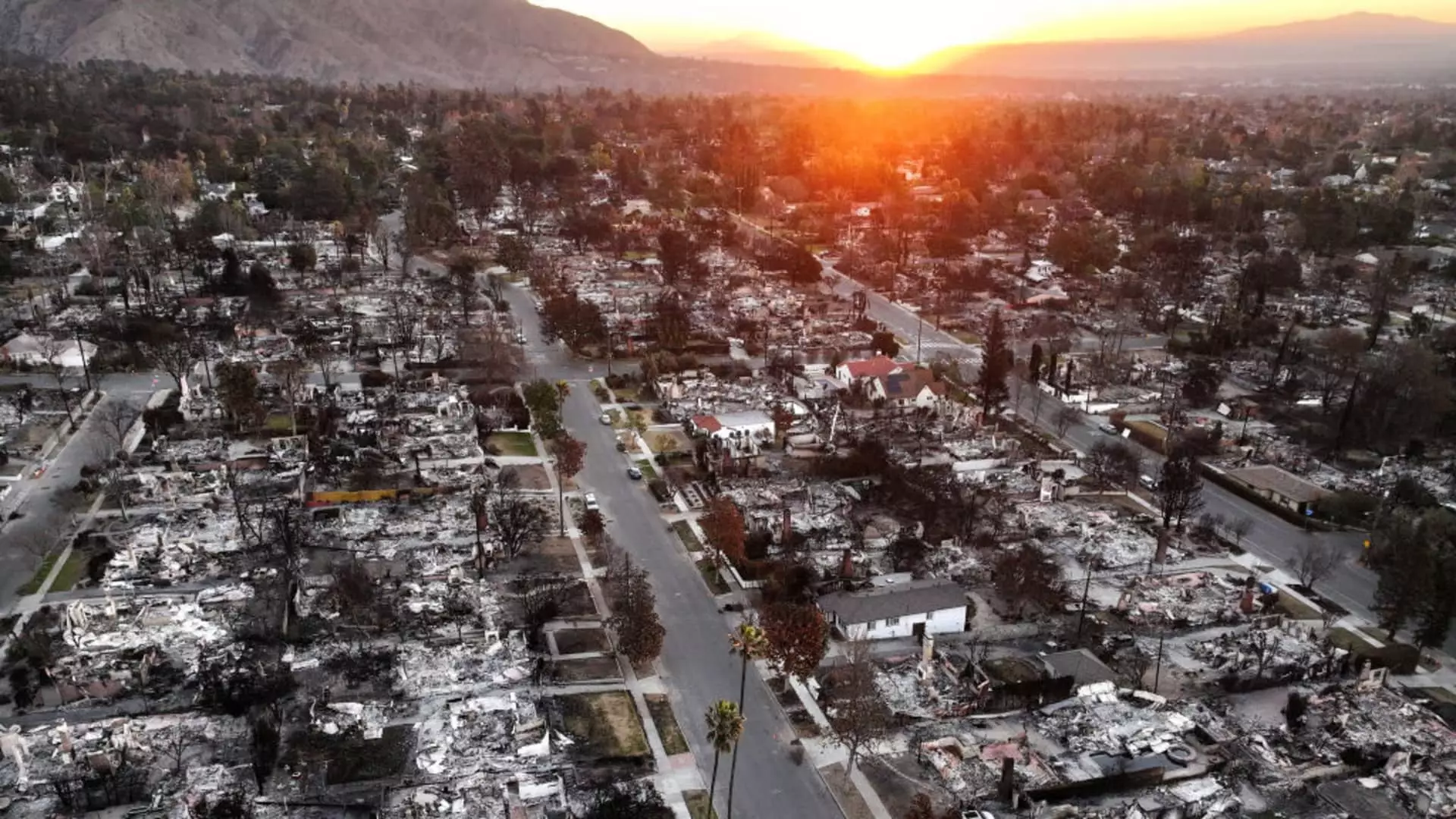The recent wildfires that swept through California, particularly devastating the Pacific Palisades area, have left families grappling with profound loss and uncertainty. One such family is that of Dr. Damon Raskin, whose home was reduced to ashes. Despite the overwhelming grief, the Raskins made a resolute decision to rebuild, showcasing a spirit of resilience that reflects the experiences of many Angelenos facing similar challenges. This determination to rise from the ruins serves as a poignant symbol of hope amid despair as the region begins to reckon with the aftermath of these catastrophic firestorms.
The statistics paint a grim picture—over 12,000 structures damaged or destroyed, with the costs of recovery already hovering around $40 billion. As communities wrestle with these losses, the onus falls not only on individual homeowners but also on California’s housing industry and local agencies, which must navigate a complex web of regulations and challenges to kickstart a massive reconstruction effort.
Rebuilding the physical structures of homes is often seen as the straightforward part of recovery. Yet experts argue that the real challenge lies in restoring the residential lots to a state suitable for rebuilding. As Tom Grable of Tri Pointe Homes articulates, clearing the debris strewn across tens of thousands of acres is a monumental task that necessitates a systematic and regulatory approach. The state government, recognizing the pressing need for expedited action, has taken measures to streamline the regulatory environment. Governor Gavin Newsom and Los Angeles Mayor Karen Bass have issued executive orders aimed at suspending certain permitting requirements, designed to accelerate recovery efforts at both the state and local levels.
However, such simplifications often gloss over the heavy lifting required at the local level. The roll-out of these measures raises questions about governance and accountability: Who will ensure that safety and environmental standards are upheld? As the past has shown, buildings constructed in haste can lead to future crises, particularly in fire-prone areas.
As homeowners like the Raskins delve into the rebuilding process, they face an environment that has changed significantly since their previous homes were built. New regulations now demand fire-resistant construction materials, reflecting a growing acknowledgment of the realities of living alongside nature’s elements. Raskin, in his pursuit of rebuilding, is researching advanced materials such as fire-resistant insulation and siding that promise to offer enhanced protection against future fires.
This shift towards resilience also opens dialogues about urban planning and environmental design. Will the community evolve to incorporate communal spaces that better withstand environmental threats? How will the desire for style intersect with the practical necessity for safety? These questions must be answered to ensure communities emerge from the ashes not just restored, but improved.
Large production homebuilders, such as Tri Pointe, are at an interesting crossroads. While they typically focus on multi-family complexes and developments, the immediate locality’s urgent need for individual homes offers them an opportunity to step into new roles as community rebuilders. Although some may fear that larger corporations will exploit the housing crisis, representatives like Grable insist that the intent is to provide necessary resources.
Yet, the larger picture reveals a tense market dynamics struggle. The demand for housing is expected to rise sharply, putting pressure on both construction material suppliers and skilled labor. Existing companies will undoubtedly face challenges in meeting both quality and quantity demands, especially under the specter of existing supply chain issues exacerbated by trade tariffs.
Beyond the physical rebuilding, the insurance landscape complicates matters significantly. Many homeowners are now dealing with a slew of insurance claims for damages, a process made intricate by the dwindling number of insurers willing to cover high-risk properties in fire-prone areas. A significant portion of these policies is now funneled through the California FAIR Plan—often seen as a last resort—pushing families like the Raskins into a precarious situation, where they may struggle to reconcile inadequate coverage for their belongings with a steep rebuilding bill.
In light of these challenges, the journey to recovery will require not only structural reconstruction but also emotional resilience. Social infrastructure and community supports will play a critical role in helping families navigate this new normal. The Raskin family’s decision to rent temporarily is emblematic of the wider fight for stability that many are now facing.
As California recovers, it should not lose sight of what these wildfires have revealed about resilience, community, and governance. The rebuilding phase should serve as an opportunity to reevaluate not only how homes are constructed but also how neighborhoods are designed. As the states of mourning and recovery coexist, California has a chance to reshape its future, ensuring that the next chapter is not just about rebuilding from ashes, but about building for resilience.
In a time marked by uncertainty and loss, the strength to rebuild presents a call to collective action, urging Angelenos to emerge not just unscathed, but strengthened, from the embers of adversity.

